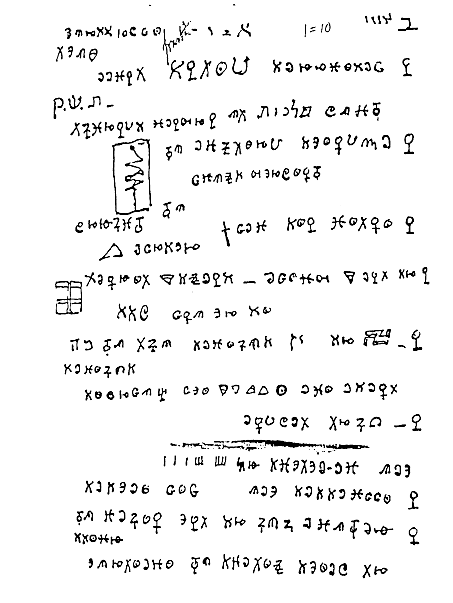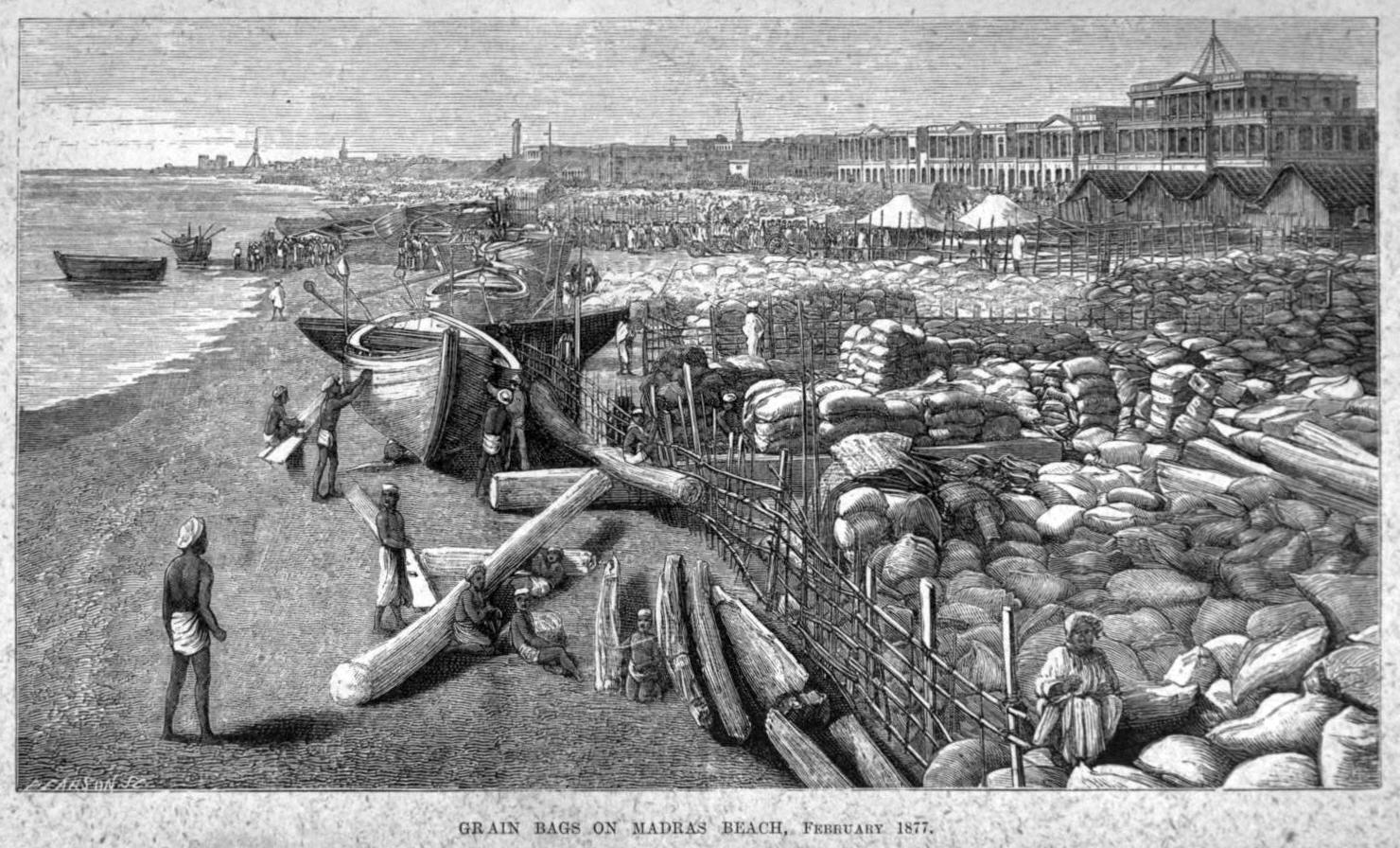|
Beatrice Irwin
Beatrice Irwin (July 16, 1877, Dagshai, India - March 20, 1953, San Diego, California,) was an actress, poet, designer and promoter of the Bah√° º√≠ Faith. Born Alice Beatrice Simpson, she took Beatrice Irwin as her stage name and later adopted it as her real name. After her family moved to Scotland and then to England, she attended Cheltenham Ladies' College where she graduated 1895 and took the Associate in Arts test in which she placed 5th for that year. She went on through a series of careers starting with being an actor in stage theatre which took her to Cape Colony, as it was known then, touring America, briefly in the then young country of Australia, and performed in Shanghai. Next she published a book of poetry and some poems were published in different venues. Neither careers were very successful but some of her work was considered pioneering particularly when she blended them with an intentional use of colored illumination. She met, admired, and was encouraged by, the ... [...More Info...] [...Related Items...] OR: [Wikipedia] [Google] [Baidu] |
Dagshai
Dagshai, also known as Daagh-e-Shahi, is one of the oldest cantonment towns in the Solan district of Himachal Pradesh, India. It is situated on top of a 5,689-foot (1,734-m) high hillock that stands sphinx-like astride the Kalka-Shimla Highway at a point about 11 km from Solan. It was founded in 1847 by the East India Company by securing free of cost five villages from Maharaja of Patiala aka Bhupinder Singh of Patiala. The names of these villages were Dabbi, Badhtiala, Chunawad, Jawag and Dagshai. The new cantonment was named after the last named village, as it was the largest and most strategically located. The name Dagshai, according to a popular local legend was derived from ''Daagh-e-Shahi''. During the Moghul times a ''Daagh-e-Shahi'' (royal mark) was put on the forehead of the criminals and sent packing to the then Dagshai village. Overview Built by the British as a sanatorium for tuberculosis patients, it has a British era graveyard overlooking a valley. It is ... [...More Info...] [...Related Items...] OR: [Wikipedia] [Google] [Baidu] |
Roy De Maistre
Roy De Maistre CBE (27 March 18941 March 1968) was an Australian artist of international fame. He is renowned in Australian art for his early experimentation with "colour-music", and is recognised as the first Australian artist to use pure abstraction. His later works were painted in a figurative style generally influenced by Cubism. His ''Stations of the Cross'' series hangs in Westminster Cathedral and works of his are hung in the Tate Gallery, London and in the Art Gallery of New South Wales, Sydney. Early life Roy went by the name of Leroy Leveson Laurent Joseph De Maistre, but had been born as Leroy Livingstone de Mestre at Bowral, New South Wales on 27 March 1894 into a home of high social standing in the then Colony of New South Wales. He was the youngest son of Etienne Livingstone de Mestre (1832–1916), the thoroughbred racehorse trainer of the first two Melbourne Cup winners; and the grandson of Prosper de Mestre (1789–1844) a prominent Sydney businessman from 1 ... [...More Info...] [...Related Items...] OR: [Wikipedia] [Google] [Baidu] |
Union Of South Africa
The Union of South Africa ( nl, Unie van Zuid-Afrika; af, Unie van Suid-Afrika; ) was the historical predecessor to the present-day Republic of South Africa. It came into existence on 31 May 1910 with the unification of the Cape, Natal, Transvaal, and Orange River colonies. It included the territories that were formerly a part of the South African Republic and the Orange Free State. Following World War I, the Union of South Africa was a signatory of the Treaty of Versailles and became one of the founding members of the League of Nations. It was conferred the administration of South West Africa (now known as Namibia) as a League of Nations mandate. It became treated in most respects as another province of the Union, but it never was formally annexed. Like Canada, Australia and New Zealand, the Union of South Africa was a self-governing dominion of the British Empire. Its full sovereignty was confirmed with the Balfour Declaration of 1926 and the Statute of Westminst ... [...More Info...] [...Related Items...] OR: [Wikipedia] [Google] [Baidu] |
Girton College, Cambridge
Girton College is one of the 31 constituent colleges of the University of Cambridge. The college was established in 1869 by Emily Davies and Barbara Bodichon as the first women's college in Cambridge. In 1948, it was granted full college status by the university, marking the official admittance of women to the university. In 1976, it was the first Cambridge women's college to become coeducational. The main college site, situated on the outskirts of the village of Girton, about northwest of the university town, comprises of land. In a typical Victorian red brick design, most was built by architect Alfred Waterhouse between 1872 and 1887. It provides extensive sports facilities, an indoor swimming pool, an award-winning library and a chapel with two organs. There is an accommodation annexe, known as Swirles Court, situated in the Eddington neighborhood of the North West Cambridge development. Swirles opened in 2017 and provides up to 325 ensuite single rooms for graduates, an ... [...More Info...] [...Related Items...] OR: [Wikipedia] [Google] [Baidu] |
St Hilda's College, Oxford
St Hilda's College is one of the constituent colleges of the University of Oxford in England. The college is named after the Anglo-Saxon Saint, Hilda of Whitby and was founded in 1893 as a hall for women; it remained a women's college until 2008. St Hilda's was the last single-sex college in the university as Somerville College had admitted men in 1994. The college now has almost equal numbers of men and women at both undergraduate and postgraduate level. The principal of the college is Professor Sarah Springman, who took office in 2022. As of 2018, the college had an endowment of £52.1 million and total assets of £113.4 million. History St Hilda's was founded by Dorothea Beale (who was also a headmistress at Cheltenham Ladies' College) in 1893, as St Hilda's Hall and recognised by the Association for the Education of Women as a women's hall in 1896. It was founded as a women's college, a status it retained until 2008. Whilst other Oxford colleges gradually became co-edu ... [...More Info...] [...Related Items...] OR: [Wikipedia] [Google] [Baidu] |
Dorothea Beale
Dorothea Beale LL.D. (21 March 1831 – 9 November 1906) was a suffragist, educational reformer and author. As Principal of Cheltenham Ladies' College, she became the founder of St Hilda's College, Oxford. Early and family life Dorothea Beale was born on 21 March 1831 at 41 Bishopsgate Street, London, the fourth child and third daughter of Miles Beale, a surgeon, of a Gloucestershire family and who took an active interest in educational and social issues. Her mother, Dorothea Margaret Complin, of Huguenot extraction, would have eleven children. She was first cousin to Caroline Frances Cornwallis, a relationship that influenced the young Dorothea. Educated till the age of 13 partly at home and partly at a school at Stratford, Essex Stratford is a town in east London, England, within the ceremonial county of Greater London. Until 1965 it was within the historic county of Essex. Part of the Lower Lea Valley, Stratford is situated 6 miles (10 km) east-northeast of Chari .. ... [...More Info...] [...Related Items...] OR: [Wikipedia] [Google] [Baidu] |
Aleister Crowley
Aleister Crowley (; born Edward Alexander Crowley; 12 October 1875 – 1 December 1947) was an English occultist, ceremonial magician, poet, painter, novelist, and mountaineer. He founded the religion of Thelema, identifying himself as the prophet entrusted with guiding humanity into the Æon of Horus in the early 20th century. A prolific writer, he published widely over the course of his life. Born to a wealthy family in Royal Leamington Spa, Warwickshire, Crowley rejected his parents' fundamentalist Christian Plymouth Brethren faith to pursue an interest in Western esotericism. He was educated at Trinity College at the University of Cambridge, where he focused his attentions on mountaineering and poetry, resulting in several publications. Some biographers allege that here he was recruited into a British intelligence agency, further suggesting that he remained a spy throughout his life. In 1898, he joined the esoteric Hermetic Order of the Golden Dawn, where he was train ... [...More Info...] [...Related Items...] OR: [Wikipedia] [Google] [Baidu] |
Hermetic Order Of The Golden Dawn
The Hermetic Order of the Golden Dawn ( la, Ordo Hermeticus Aurorae Aureae), more commonly the Golden Dawn (), was a secret society devoted to the study and practice of occult Hermeticism and metaphysics during the late 19th and early 20th centuries. Known as a magical order, the Hermetic Order of the Golden Dawn was active in Great Britain and focused its practices on theurgy and spiritual development. Many present-day concepts of ritual and magic that are at the centre of contemporary traditions, such as Wicca and Thelema, were inspired by the Golden Dawn, which became one of the largest single influences on 20th-century Western occultism. The three founders, William Robert Woodman, William Wynn Westcott and Samuel Liddell Mathers, were Freemasons. Westcott appears to have been the initial driving force behind the establishment of the Golden Dawn. The Golden Dawn system was based on hierarchy and initiation, similar to Masonic lodges; however, women were admitted on a ... [...More Info...] [...Related Items...] OR: [Wikipedia] [Google] [Baidu] |
Ellen Terry
Dame Alice Ellen Terry, (27 February 184721 July 1928), was a leading English actress of the late 19th and early 20th centuries. Born into a family of actors, Terry began performing as a child, acting in Shakespeare plays in London, and toured throughout the British provinces in her teens. At 16, she married the 46-year-old artist George Frederic Watts, but they separated within a year. She soon returned to the stage but began a relationship with the architect Edward William Godwin and retired from the stage for six years. She resumed acting in 1874 and was immediately acclaimed for her portrayal of roles in Shakespeare and other classics. In 1878 she joined Henry Irving's company as his leading lady, and for more than the next two decades she was considered the leading Shakespearean and comic actress in Britain. Two of her most famous roles were Portia in ''The Merchant of Venice'' and Beatrice in ''Much Ado About Nothing''. She and Irving also toured with great success i ... [...More Info...] [...Related Items...] OR: [Wikipedia] [Google] [Baidu] |
Victorian Era
In the history of the United Kingdom and the British Empire, the Victorian era was the period of Queen Victoria's reign, from 20 June 1837 until her death on 22 January 1901. The era followed the Georgian period and preceded the Edwardian period, and its later half overlaps with the first part of the ''Belle Époque'' era of Continental Europe. There was a strong religious drive for higher moral standards led by the nonconformist churches, such as the Methodists and the evangelical wing of the established Church of England. Ideologically, the Victorian era witnessed resistance to the rationalism that defined the Georgian period, and an increasing turn towards romanticism and even mysticism in religion, social values, and arts. This era saw a staggering amount of technological innovations that proved key to Britain's power and prosperity. Doctors started moving away from tradition and mysticism towards a science-based approach; medicine advanced thanks to the adopti ... [...More Info...] [...Related Items...] OR: [Wikipedia] [Google] [Baidu] |
Roorkee
Roorkee (Rūṛkī) is a city and a municipal corporation in the Haridwar district of the state of Uttarakhand, India. It is from Haridwar city, the district headquarter. It is spread over a flat terrain under Sivalik Hills of Himalayas. The city is developed on the banks of Ganges Canal, its dominant feature, which flows from north–south through middle of the city. Roorkee is home to Asia's first engineering college Indian Institute of Technology Roorkee, formerly known as Thomson College of Civil Engineering. Roorkee is also known for the Roorkee Cantonment, one of the country's oldest military establishments and the headquarters of Bengal Engineer Group since 1853. A freight train ran in between Roorkee and Piran Kaliyar on 22 December 1851, this was two years before first passenger trains were started between Bombay and Thana in 1853 and 14 years after first freight trains ran in Chennai in 1837.irfca.org/docs/history/india-first-railways.html History Roorkee is li ... [...More Info...] [...Related Items...] OR: [Wikipedia] [Google] [Baidu] |
Great Famine Of 1876–1878
The Great Famine of 1876–1878 was a famine in India under Crown rule. It began in 1876 after an intense drought resulted in crop failure in the Deccan Plateau. It affected south and Southwestern India—the British-administered presidencies of Madras and Bombay, and the princely states of Mysore and Hyderabad—for a period of two years. In 1877, famine came to affect regions northward, including parts of the Central Provinces and the North-Western Provinces, and a small area in the Punjab. The famine ultimately affected an area of and caused distress to a population totalling 58,500,000. The excess mortality in the famine has been estimated in a range whose low end is 5.6 million human fatalities, high end 9.6 million fatalities, and a careful modern demographic estimate 8.2 million fatalities. The famine is also known as the Southern India famine of 1876–1878 and the Madras famine of 1877. Preceding events The ''Great Famine'' may have partially been caused by an ... [...More Info...] [...Related Items...] OR: [Wikipedia] [Google] [Baidu] |









